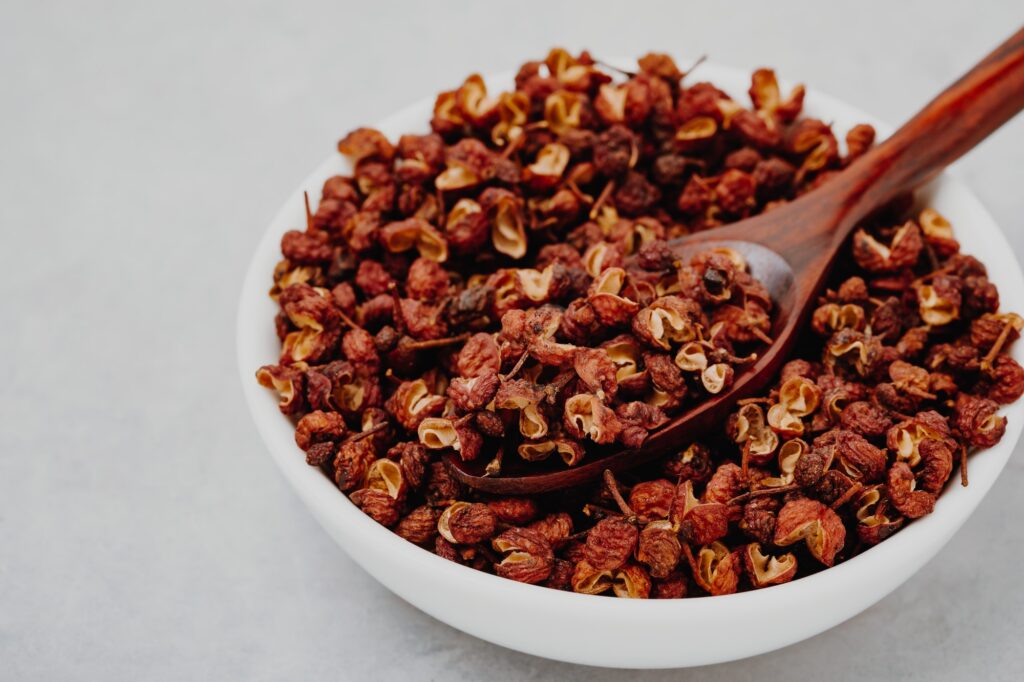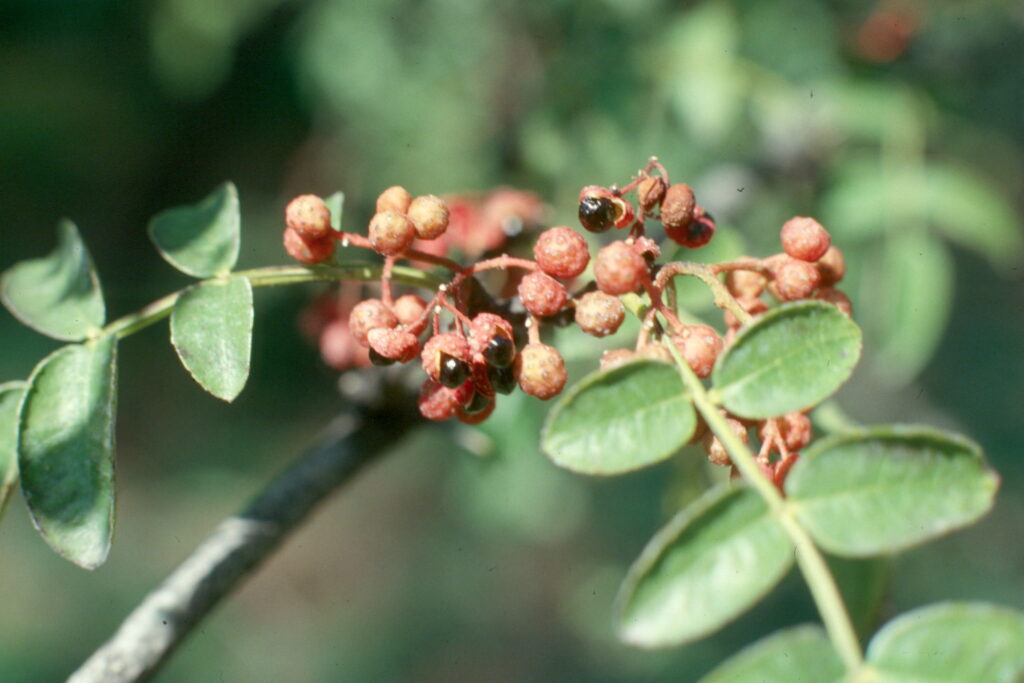16 Interesting Facts About Sichuan Pepper


Introduction
Sichuan pepper, sometimes called Szechwan peppercorn or Chinese prickly ash, gets its name from China’s Sichuan province. It comes from the prickly ash tree instead of the pepper family, which is why it has an unusually citrus-like taste.
The outer husks of Sichuan peppercorns are dried and added to dishes whole or ground into a powder. Known for creating a tingling, buzzing feeling on the lips and mouth, Sichuan pepper delivers an extra dimension of flavor.
Keep reading to uncover 16 interesting facts about this numbing yet savory spice. Discover what makes it so special and why it deserves a spot in more recipes across the globe!
Interesting Facts About Sichuan Pepper
1. It’s Not a Pepper
Sichuan pepper comes from the prickly ash tree, a flowering plant in the citrus family1. That’s why it has lemony, floral notes, unlike black, white, or chili peppers from the Piperaceae family.
2. 250+ Varieties Exist
There are over 250 known varieties of the prickly ash tree that produces Sichuan peppers. Differences in climate and soil lead to variations in taste and spice level.
3. The Husk is Used, Not the Seed
Only the dried, outer husk of Sichuan peppercorn contains flavor and the tongue-numbing compound. The black seeds inside the husks are bitter and discarded.
4. It Delivers Vibration-Like Sensations
Unique compounds like hydroxy alpha sanshool produce a buzzing, tingling effect on the mouth that vibrates rather than registers as simply spicy taste.
5. It’s Called “Ma” Pepper in Chinese
In Mandarin Chinese, Sichuan pepper is known as máhuā or “numbing peppercorns” thanks to its distinctive mouth-numbing qualities2.
6. It Triggers Touch Receptors
The sanshool in Sichuan peppers activates sensory receptors that detect touch and vibration rather than taste receptors on the tongue.
7. It Enhances Other Ingredients’ Flavors
While flavorful alone, Sichuan pepper also magnifies and rounds out the tastes of other ingredients when combined with them.
8. Whole vs. Powdered Forms
Sichuan pepper can be used whole or ground. Whole peppercorns allow for a controlled release of flavor and numbing while powders distribute easily.
9. It Has Many Convenient Forms
Beyond whole husks and powder, Sichuan pepper comes in salt blends, oils, and extract forms to conveniently add flavor.
10. It Has Analgesic Uses
In traditional Chinese medicine, Sichuan pepper was used as a local anesthetic for its tongue-numbing and pain-relief capabilities.
11. It Defines Sichuan Cuisine

A signature Sichuan dishes like málà dòufu (numbing-spicy tofu) owe their intense flavor and tingling sensation to the liberal use of Sichuan pepper.
12. It Balances Chili Burn
By slightly numbing the mouth, Sichuan pepper allows eaters to appreciate chili pepper heat levels they might otherwise find overpowering.
13. It was Once Banned in the US
Fears over citrus disease led to a 1968 US ban on Sichuan pepper imports that wasn’t lifted until 2005 when healthy crops were certified.
14. Quality Varies Widely
Due to improper storage and transport, much Sichuan pepper sold outside China loses its signature aroma and numbing qualities over time.
15. It’s Key in Tibetan Food
In Tibetan cuisine, Sichuan pepper and chili peppers are blended into a foundational spice mix used across many dishes.
16. It Complements Savory and Sweet Foods
From meats to tofu, stir-fries, and even desserts, Sichuan pepper pairs well with an array of ingredients in both sweet and savory recipes.

Frequently Asked Questions About Sichuan Pepper
What exactly is Sichuan pepper?
Sichuan pepper, also known as Sichuan peppercorn, is not a true pepper. It comes from the dried berries of the prickly ash tree, which is native to China’s Sichuan province. It has a unique citrusy, woody aroma and flavor profile.
What causes the numbing sensation when eating Sichuan pepper?
The numbing, tingling sensation from Sichuan pepper is caused by hydroxy-alpha sanshool, a compound found naturally in the peppercorns. This creates a buzzing feeling on the lips and tongue.
How is Sichuan pepper used in cooking?
Sichuan pepper is a signature ingredient in Sichuan cuisine, where it is ground into a powder and used in various dishes. It is also commonly used in five-spice powder. Sichuan pepper adds flavor and a numbing sensation to stir-fries, sauces, marinades, and more.
Are there health benefits to Sichuan pepper?
Some potential health benefits of Sichuan pepper include improved digestion, anti-inflammatory effects, and antimicrobial properties. However, more research is still needed on the health effects of the peppercorns. They are used in traditional Chinese medicine.
Where can I buy high-quality Sichuan pepper?
Look for Sichuan pepper at Asian grocery stores or specialty spice shops. When possible, smell the peppercorns first, as fresher ones will have a stronger, fruitier aroma. Online spice retailers like Fly By Jing offer freshly harvested Sichuan pepper.
Conclusion
In summary, Sichuan pepper offers a truly unique flavor and mouthfeel, unlike any other spice. With its lemony citrus taste and tingling numbness, it elevates a wide range of foods from across Chinese and Tibetan cuisines. Once overlooked in the West, food lovers worldwide are starting to incorporate it more into dishes.
Next time you cook, consider adding a dash of Sichuan peppercorn to appreciate its buzzy “má” sensation and dynamic kick. Just be sure to store it properly to enjoy its full-numbing potential.
After learning these 16 intriguing Sichuan pepper facts, you’ll never underestimate this not-actually-a-pepper again! Harness its savory, citrusy flavor to give your recipes some tingling spice.






